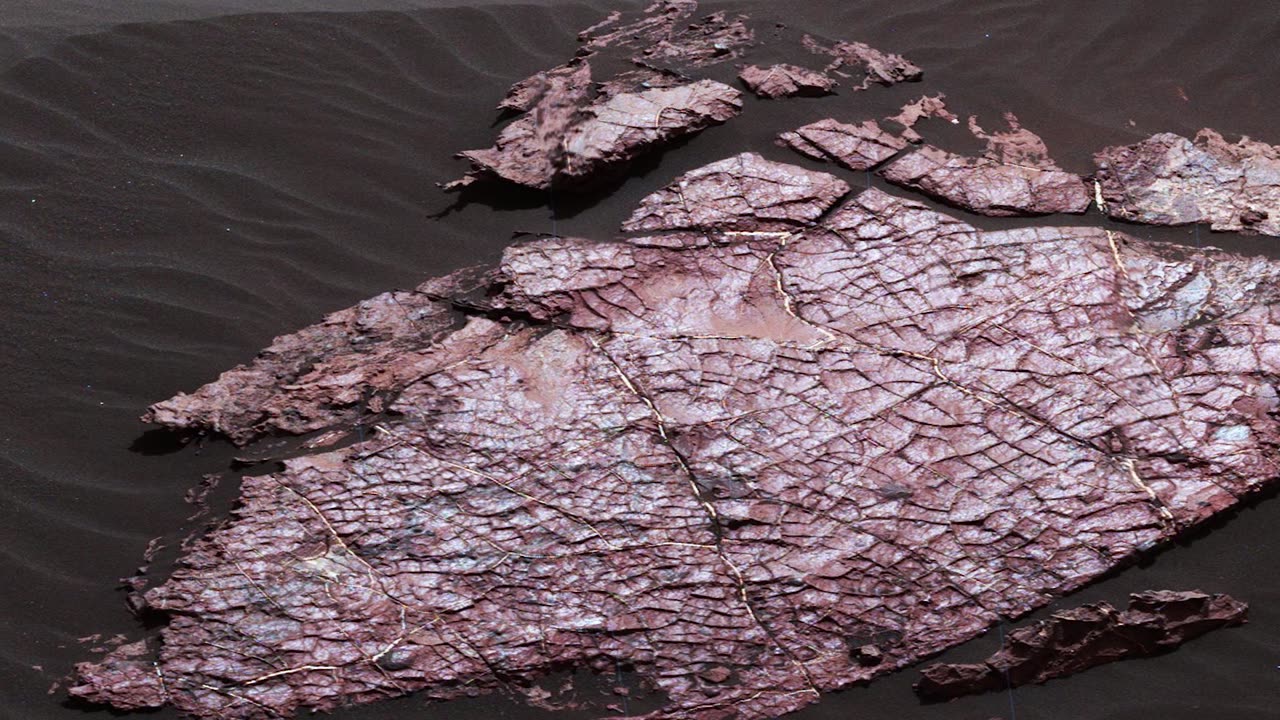Premium Only Content

Mars : A Guide to Gale Crater
August 02, 2017
The Curiosity rover has taught us a lot about the history of Mars and its potential to support life. Take a tour of its landing site, Gale Crater.
TRANSCRIPT
In 2012, NASA’s Curiosity Rover went to Mars to explore Gale Crater, a large impact basin with a massive, layered mountain in the middle. How did this strange landscape come to be? And what can its history teach us about the potential for life on Mars? After several years of exploration, here’s what we think could have happened.
Around 3.7 billion years ago, a large meteor impact blasts out the initial crater, cracking the rock below and leaving a central peak as the surface rebounds. It’s a wetter time in Mars’ history. Groundwater seeps into the new crater, while rivers fed by rain or melting snow also flow in, forming a large lake – and carrying in gravel, sand and silt.
This material keeps building up over millions of years. And as each layer cements into rock, it records a snapshot of the environment that shaped it. In time, the gradual drying of Mars shuts off the rivers. But sediment keeps piling up as sand and dust blow into the crater, deeply burying the deposits laid down in water.
Meanwhile, groundwater remains deep below the dusty surface. At some point, winds that once carried sediment in begin scouring it back out. In areas closer to the crater rim, these winds dig all the way down into the ancient lake deposits. And as the heavy weight above is lifted, these layers crack, which helps groundwater flow through and alter them again before they dry out.
By about 3 billion years ago, we’re left with the basic form we see today. It’s in this version of Gale Crater that Curiosity has helped piece together the story: Sediment patterns show a lot of water was present, continually, over many millions of years – both as persistent groundwater, and a long-standing lake (with occasional dry spells).
Mineral and chemical readings show that water from both the lake and subsurface was friendly for potential microbes. Drill samples from the lakebed show key elements, organic molecules, nutrients and energy sources that microbes could have used. Water flowing through underground fractures could have supported life even in deeply buried rocks. And the composition of some layers makes them good for preserving potential signs of past life.
Taken together, the evidence points to Gale Crater (and Mars in general) as a place where life — if it ever arose — might have survived for some time.
With our primary mission fulfilled, we continue exploring: uncovering the history of Mars, and learning more about how and where future missions can search for the signatures that ancient life may have left behind.
-
 2:59:56
2:59:56
Laura Loomer
13 hours agoEP143: Remembering Charlie Kirk (1993–2025)
115K80 -
 58:04
58:04
Man in America
15 hours agoCharlie Kirk’s Assassination—An URGENT WARNING for America
125K176 -
 1:22:15
1:22:15
Glenn Greenwald
14 hours agoCharlie Kirk Assassination Fallout: U.S. Reps Call for Censorship; Do Graphic Videos Serve the Public Interest? Plus: WIRED Reporter on the Dark Side of Surrogacy | SYSTEM UPDATE #513
230K201 -
 1:48:36
1:48:36
Right Side Broadcasting Network
20 hours agoLIVE: President Trump Attends the Yankees Baseball Game - 9/11/25
210K29 -
 1:54:32
1:54:32
Badlands Media
14 hours agoBadlands Media Special Coverage - FBI Press Conference on Charlie Kirk's Assassination
171K21 -
 1:06:19
1:06:19
BonginoReport
15 hours agoManhunt Underway for Charlie Kirk’s Assassin - Nightly Scroll w/ Hayley Caronia (Ep.132)
343K274 -
 1:11:42
1:11:42
Flyover Conservatives
23 hours agoStructural Architect Destroys 9.11 Narrative... What Really Happened? - Richard Gage AIA | FOC Show
115K24 -
 1:51:14
1:51:14
Precision Rifle Network
18 hours agoS5E1 Guns & Grub - Charlie Kirk's "sniper"
67.2K21 -
 13:09:12
13:09:12
LFA TV
1 day agoLFA TV ALL DAY STREAM - THURSDAY 9/11/25
424K100 -
 1:01:56
1:01:56
The Nick DiPaolo Show Channel
16 hours agoDems + Media Killed Kirk | The Nick Di Paolo Show #1792
139K131